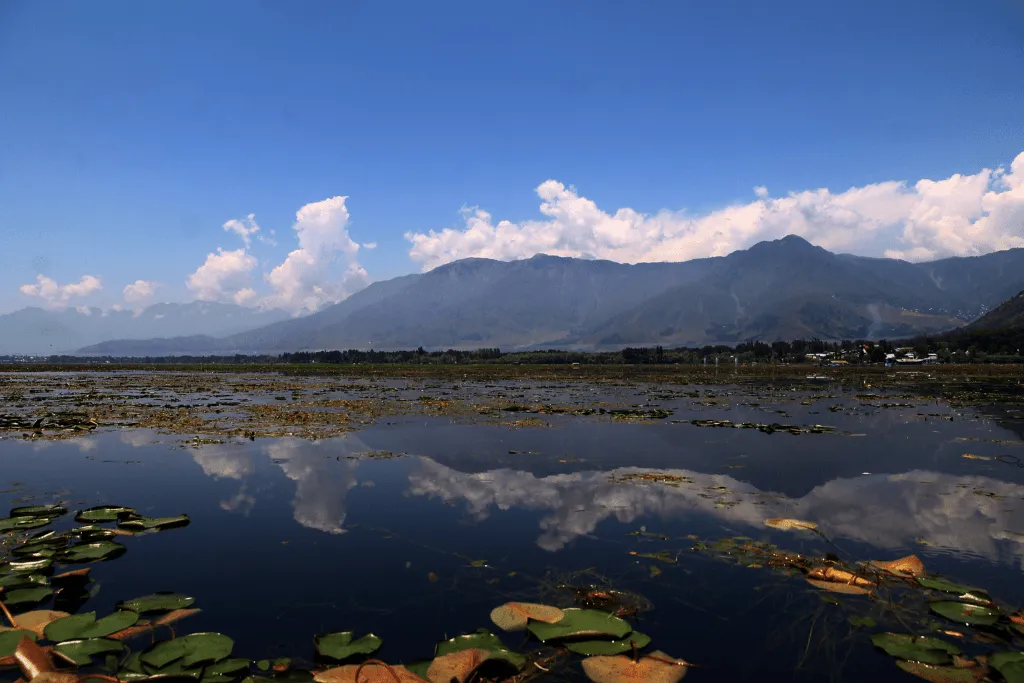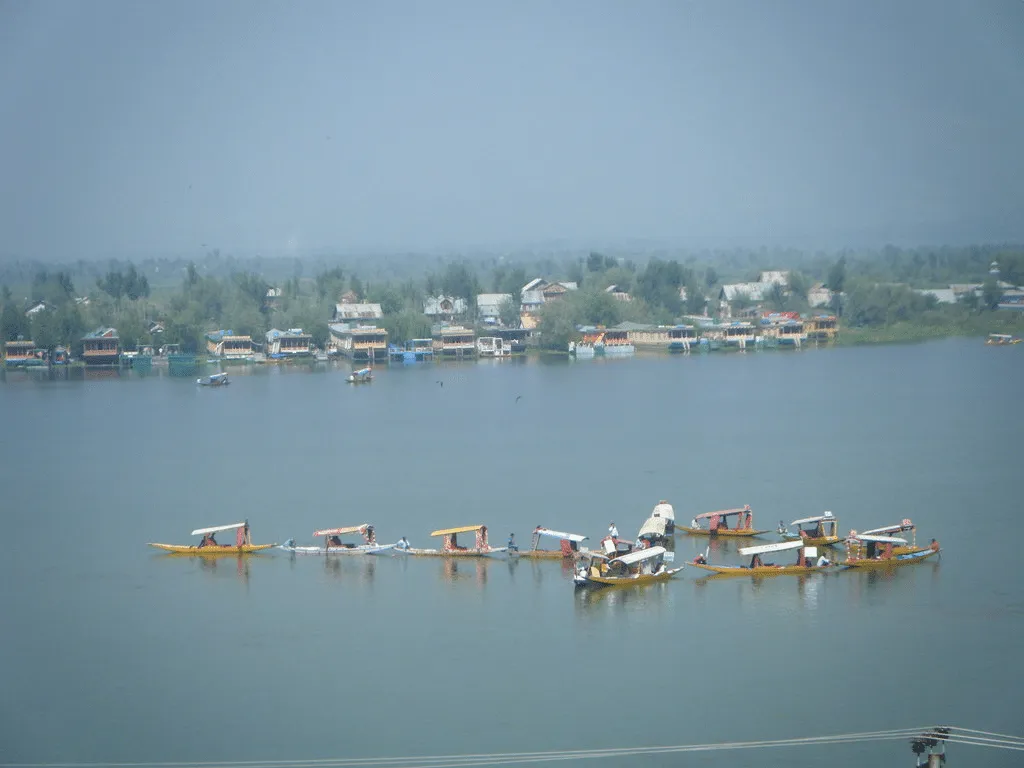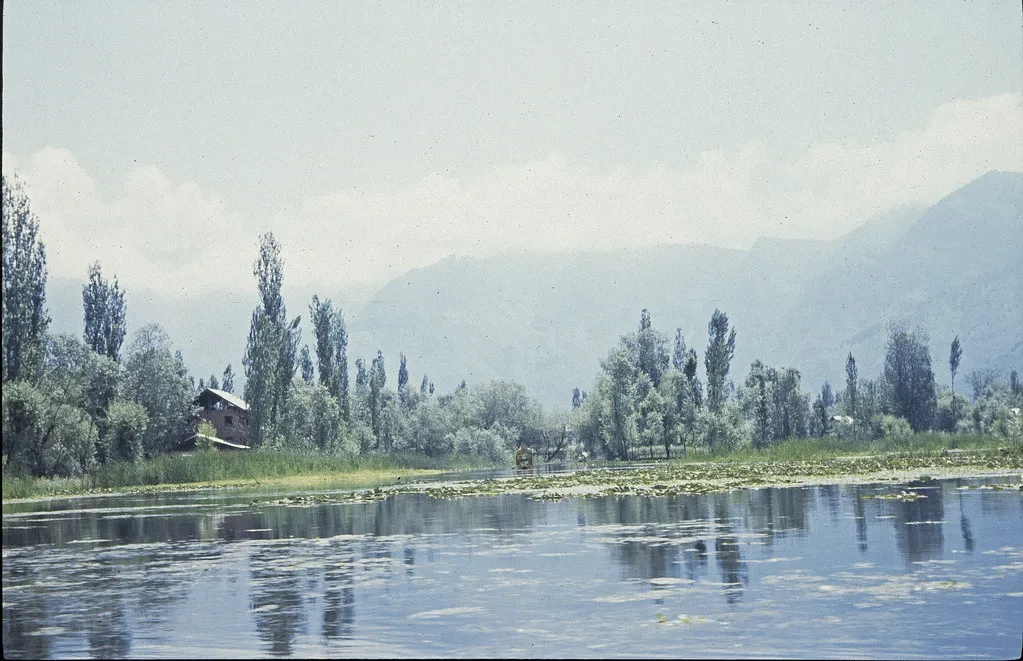The pristine-looking Dal Lake, one of the main attractions for tourists coming to Jammu and Kashmir, is slowly turning into a swamp due to rising pollution levels in and around the famous lake. The lake is slowly turning into a “weed-clogged swamp” one environmentalist says could hurt tourism in the state.
Dal Lake turning into a swamp lake
Dal Lake, famous for its carved cedar houseboats, is the centrepiece of Srinagar’s expanding tourism. However, in a span of more than two decades, the lake has more than halved to just 11 square kilometres and lost more than 10 meters in depth. “This lake is dying fast. It’s turning into a swamp,” says Manzoor Ahmed, a prominent businessman who is leading a campaign to conserve the lake.
Shahzada Begum, 45, a Dal dweller, told GroundReport.in that her children had fallen ill due to the foul smell of the lake. “We are suffocating, for the last few months, the lake has witnessed a sharp rise in pollution. The government is not doing anything,” she rues. The lake is facing a dismal fate as sewage and high-nutrient loads continue to flow through it.

“Increasing pollution and sewage discharge into the lake from the towns of Rainawari and Babdem are an obstacle to its conservation,” said Ghulam Muhammad, 65, a shikara owner, saying the influx of tourists has increased. been affected. “No one wants to stay on houseboats because the environment is unpleasant,” he says.
“Thousands of people depend on the lake for their livelihood. Whether they are houseboat owners, vegetable vendors or shikarawalas, they have all been affected. Sewage is being dumped into the lake and the authorities are not doing anything about it,” says Bashir Ahmad, a local from the Dal.
Kashmir’s iconic Dal Lake is immortalized both in literature and in countless popular movies, but sadly today it has become a victim of political, social and economic neglect over the years.
Failed Master plans
The state government in November 2018 in the J&K High Court said that Rs 759 crore has been spent on the lake since 2002, but the situation of the lake continues to worsen day by day.
Various restoration plans from national and international agencies were documented over decades: Srinagar Master Plan 1971, Stein Lake Area Master Plan (1972), Enex Consortium Report (1978), Dal Development Report Riddle’s Lake (1985), ODA (1989), the project report under NCLP (1997), and the AHEC Roorkee project report (2000), have been played with, but there have been few improvements to the lake environment.
In 2018, the J&K High Court constituted a three-member High-Level Committee to suggest measures to save Kashmir’s iconic lake and the report is likely to come before the court at the end of November.
Dal Lake development timeline
1997
The former Union Ministry of Environment and Forestry launched the “Save Dal Project” with a large allocation of Rs 500 million to clean up the lake.
1998
In January of the year, Rs 5 lakh was given to the Lakes and Waterways Development Authority (LAWDA) of Jammu and Kashmir for the preparation of a pre-feasibility report on pollution of water bodies in Kashmir. The proposal made was returned to the state government for its comments in June 1998, as it was considered unsustainable in view of the high cost of operation and maintenance.
2000
On July 24, ‘Green Kashmir’, a Srinagar-based NGO and Syed Mujtaba Hussain, a human rights lawyer, filed a written petition with the Supreme Court of India against the Government of India, the state of Jammu and Kashmir, J&K Lakes and Waterways Development Authority (JK-LAWDA), State Pollution Control Board (JK-PCB).

That same year, on September 11, the Supreme Court issued a notice of good cause to all the defendants, asking them to specify their respective roles in controlling the flow of pollutants into the lake.
2001
A petition was filed regarding the expense sheet submitted by JK-LAWDA on account of the expenses used for the improvement of the lake. In the same year, the Supreme Court ordered the central and state governments and other concerned authorities to submit their responses within four weeks to the public interest litigation seeking Dal’s environmental protection.
2002
Syed Iqbal Tahir Geelani wrote a letter to the Chief Justice against the construction around Dal Lake. The petitioner wrote that the constructions violated the Srinagar Master Plan, 1971. This later became a PIL and was flagged in the PIL submitted in 2000.
2005
A censure was filed against LAWDA and SMC for misleading the Court. A three-member committee, headed by Session and District Judge Abdul Wahid and co-opted by three officials, visited Dal Lake on October 5, 10 and 15 for the inspection.
2006
The High Court ordered LAWDA to resume demolition around Dal Lake and file a status report on the illegal structures from Dal Gate to Mughal Gardens in Srinagar.
2007
Judge Bashir Ahmad Khan ordered the demolition of all buildings within 130 feet of the centre of the road.
In the same year, the state pollution control board (JK-PCB) launched a lawsuit against the famous Grand Palace Hotel and the Department of Urban Environmental Engineering for erecting unauthorized structures around Dal Lake.
2009
The PCB submitted a report showing high levels of lead, arsenic, iron, manganese, copper, and cadmium present in Dal Lake, affecting aquatic life in the lake. The report also said that houseboat toilets had severely polluted the lake. After this, the courts ordered 1,200 houseboats to close or take steps to minimize pollution.
A sum of Rs 298 million was released to spend on the development of the sewage system, removal of intrusions, waterworks, canal cleaning, solid waste management and conservation works in the Dal Lake catchment area.
In May 2009, Jammu and Kashmir banned the registration of houseboats. A 2009 report from the State Pollution Control Board says that houseboat toilets have severely polluted the lake.
2014
The High Court imposed a ban on any illegal structures erected in and around Dal. The High Court also set up a committee to prepare a well-defined report on the overall situation of Dal Lake.
2015
LAWDA was ordered to plug all open drains and update STPs. The Authority had presented in court that the department was already working on upgrading and building new STPs, but no such effort has been seen on the ground to date.

2016
Court-appointed watch commissioners were asked to submit their reports regarding the lake. In their various reports, they have continually informed the judiciary that illegal construction has continued in and around the lake.
2017
The court ordered that an assessment of the lake’s water quality be carried out and also ordered that the water lilies be uprooted.
2018
The court once again called for immediate action to save the lake, noting that restoration of the lake would otherwise be “desperate”.
While Dal has always drawn public attention, the reality is that the other major lakes in Kashmir such as Anchar, Wullar, Gilsar, Khushalsar and Nageen are also in dire condition due to unchecked encroachment and pollution. Dal Lake’s restoration is particularly important because it also holds the key to its future.
The lake is divided into four basins namely Nigeen, Hazratbal, and Bod Dal. The deepest and shallowest basins are Nigeen and Gagribal, with a depth of around 6m and 2.25m, respectively.
Dal Lake has very high social and economic services
However, the lake remains the main attraction of Srinagar and also provides the city with water for domestic use. Dal Lake has a very high social and economic service, but still the lake has reached its final stage.
The destruction of the Dal Lake invasions has been mainly caused by the Hanji community, which in turn degrades the environment of the lake.
They also state that the increased flow of tourists to the lake has resulted in city residents acquiring space to set up and run their businesses in the form of hotels and restaurants on and around the lake, which in turn has led to the transformation of the lake land.
One of the main drawbacks is the swampy areas around the lake that have been converted to building land and floating gardens.
9,000 metric tons of waste dumped into Dal Lak
The plantations/orchards also saw an increase in the land in the swamp zone and the lake zone. During the study, it has been recorded that the land dedicated to agriculture is also gaining ground from the water of the lake and the plantation/orchard.
It is also reported that 1,200 houseboats within Dal Lake generate approximately 9,000 metric tons of waste annually which is dumped into Dal Lake. Including these wastes, 15 major drains were also dumped into the lake which extracted 18.17 tons of phosphorous and 25 tons of inorganic nitrogenous nutrients.
Waste generation in the Lokut and Bod Dal districts is about 97,000 kg/day.
Obstruction and blockage of the internal water channels that circulate and distribute the waste causes diseases and epidemics such as malaria, dengue and cholera, increasing the average temperature of the city of Srinagar.
Having said all this about the deterioration of the lake, it is very important to continuously monitor the condition of said bodies of water.
Dal Lake’s open space area increases
The Lake Conservation and Management Authority (LCMA) Vice President Bashir Ahmad Bhat said that the area of the world-famous Dal Lake has never changed, stating that the lake covers an open space area of 20.3 square kilometres.
Keep Reading
Indian agriculture household earns just Rs. 10,218 in a month: Govt
Post-harvest losses still high, reveals data shared in Lok Sabha
Khadi Haat village’s power-free wastewater treatment solution and more
Support us to keep independent environmental journalism alive in India.
Follow Ground Report on X, Instagram and Facebook for environmental and underreported stories from the margins. Give us feedback on our email id greport2018@gmail.com.
Don’t forget to Subscribe to our weekly newsletter, Join our community on WhatsApp, and Follow our YouTube Channel for video stories.







